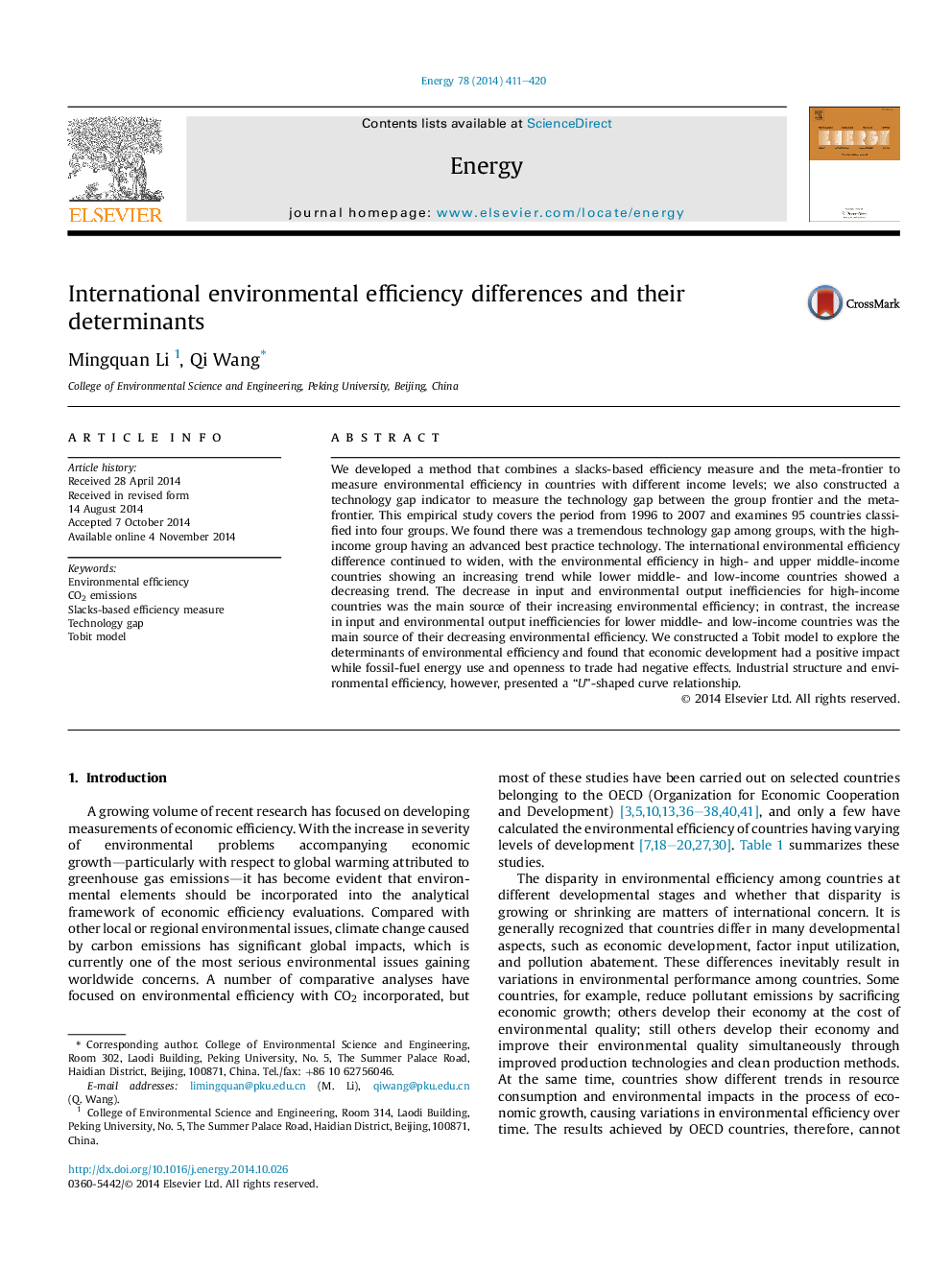| Article ID | Journal | Published Year | Pages | File Type |
|---|---|---|---|---|
| 8076087 | Energy | 2014 | 10 Pages |
Abstract
We developed a method that combines a slacks-based efficiency measure and the meta-frontier to measure environmental efficiency in countries with different income levels; we also constructed a technology gap indicator to measure the technology gap between the group frontier and the meta-frontier. This empirical study covers the period from 1996 to 2007 and examines 95 countries classified into four groups. We found there was a tremendous technology gap among groups, with the high-income group having an advanced best practice technology. The international environmental efficiency difference continued to widen, with the environmental efficiency in high- and upper middle-income countries showing an increasing trend while lower middle- and low-income countries showed a decreasing trend. The decrease in input and environmental output inefficiencies for high-income countries was the main source of their increasing environmental efficiency; in contrast, the increase in input and environmental output inefficiencies for lower middle- and low-income countries was the main source of their decreasing environmental efficiency. We constructed a Tobit model to explore the determinants of environmental efficiency and found that economic development had a positive impact while fossil-fuel energy use and openness to trade had negative effects. Industrial structure and environmental efficiency, however, presented a “U”-shaped curve relationship.
Related Topics
Physical Sciences and Engineering
Energy
Energy (General)
Authors
Mingquan Li, Qi Wang,
